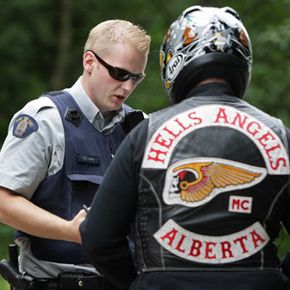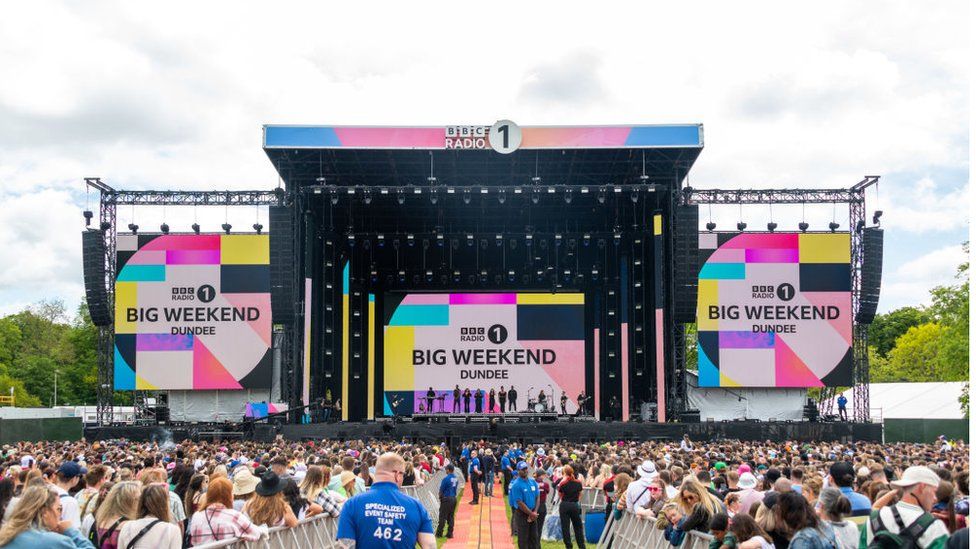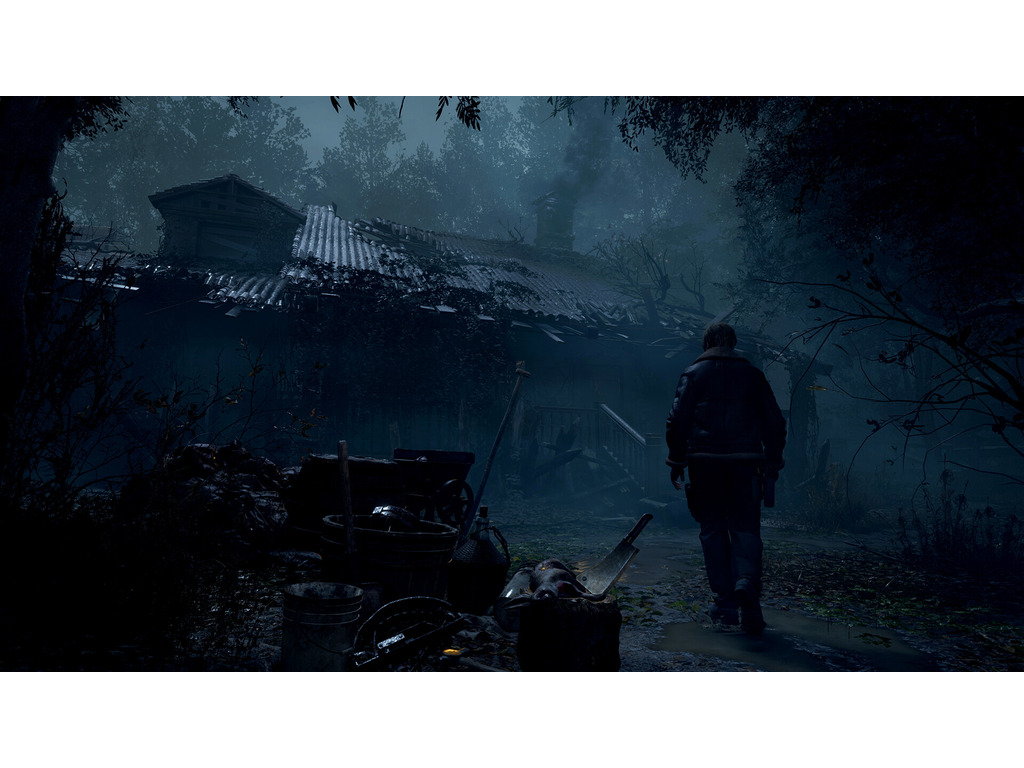Inside The World Of The Hells Angels

Table of Contents
The History of the Hells Angels
Early Years and Formation
The Hells Angels Motorcycle Club was founded in 1948 in San Bernardino, California. The initial members were a group of World War II veterans drawn together by their shared love of motorcycles and a rebellious spirit. Early activities centered around motorcycle racing, barroom brawls, and a general rejection of mainstream society. Their iconic "death head" logo, featuring a winged skull, emerged during this period, quickly becoming a symbol of their outlaw biker identity. Key early members, though their names are often shrouded in mystery, played crucial roles in establishing the club's culture and its enduring appeal to future generations of Hells Angels.
- Founding Year: 1948
- Founding Location: San Bernardino, California
- Early Activities: Motorcycle racing, social gatherings, and increasingly, confrontations with rival motorcycle clubs and law enforcement.
Expansion and Growth
From their humble beginnings in California, the Hells Angels expanded rapidly across the United States and eventually internationally. The establishment of new chapters, often fueled by a desire for territory and control, led to significant conflicts with rival motorcycle clubs like the Bandidos and the Mongols. These conflicts, often violent, cemented the Hells Angels' reputation for brutality and ruthlessness. Their growth can be attributed to several factors: a strong sense of brotherhood, a carefully cultivated outlaw image, and, critically, a willingness to engage in criminal activities to fund their operations and expand their influence.
- Geographic Expansion: Across the US and internationally into Europe, Australia, and other regions.
- Significant Rivalries: Bandidos, Mongols, and other outlaw motorcycle gangs (OMGs).
- Factors Contributing to Growth: Strong sense of brotherhood, outlaw image, and involvement in criminal activities.
The Structure and Organization of the Hells Angels
Hierarchical Structure
The Hells Angels operate under a strict hierarchical structure. At the top is the "Mother Chapter," often considered the most powerful and influential. Below this are individual chapters, each with its own president, vice president, sergeant-at-arms, and other officers. This structure allows for a degree of autonomy within each chapter while maintaining overall control from the top. Decisions are made through a complex process, often involving consensus amongst the leadership, but ultimate authority rests with the highest-ranking members.
- Mother Chapter: The most powerful chapter.
- Chapter Structure: President, Vice President, Sergeant-at-Arms, and other officers.
- Decision-Making: A mix of consensus and hierarchical authority.
Membership and Initiation
Becoming a member of the Hells Angels is a rigorous process. Prospective members, often referred to as "prospects," must undergo a period of probation, proving their loyalty and commitment to the club. Initiation rites remain largely secret, but they are known to be demanding and often involve acts of violence or criminal activity. The "patch," the club's insignia, is a highly coveted symbol of membership, signifying a lifelong commitment and an unwavering allegiance to the club. Leaving the club is exceptionally rare and often carries serious consequences.
- Membership Requirements: Loyalty, commitment, and willingness to participate in club activities.
- Initiation Rites: Often secretive and involve proving loyalty through violence or criminal activities.
- Significance of the Patch: A symbol of lifelong commitment and membership.
Activities and Allegations of Criminal Activities
Legal Businesses and Undercover Activities
While the Hells Angels present a public image focused on motorcycle culture and brotherhood, allegations of criminal activity have persistently plagued the club. They have been linked to a wide range of illegal activities, including drug trafficking, extortion, money laundering, and violence. Although some chapters may engage in legitimate businesses, such as motorcycle repair shops or bars, these often serve as fronts for illegal operations. Numerous court cases and investigations have documented these activities, highlighting the challenges law enforcement faces in prosecuting Hells Angels members due to their tight-knit structure and code of silence.
- Documented Criminal Activities: Drug trafficking, extortion, money laundering, and violence.
- Legal Challenges: Code of silence, complex organizational structure, and difficulties in gathering evidence.
- Relationship with Organized Crime: Alleged ties to other criminal organizations.
Public Perception and Media Portrayal
The Hells Angels' image in the media and the public's perception are complex and often contradictory. The club cultivates an outlaw biker image, embracing rebellion and nonconformity. This image, carefully constructed and maintained, has been both celebrated and condemned. Media portrayals, often sensationalized and focusing on the criminal aspects of the club, have significantly shaped public opinion. Separating the club's carefully crafted image from the reality of its activities is a considerable challenge.
- Media Portrayals: Often sensationalized and focused on criminal activities.
- Public Perception: A mix of fear, fascination, and condemnation.
- Image Evolution: From rebellious bikers to a symbol of organized crime.
The Hells Angels Today
Current Status and Global Presence
The Hells Angels Motorcycle Club remains a significant presence globally, with chapters in numerous countries. Their activities continue to draw scrutiny from law enforcement agencies worldwide. While the club maintains a strong sense of brotherhood among its members, the ongoing allegations of criminal activity and their complex global network pose challenges for law enforcement and continue to shape public perception.
Ongoing Investigations and Legal Battles
Investigations and legal battles involving the Hells Angels remain ongoing in various jurisdictions. Law enforcement agencies continuously work to dismantle their criminal activities and bring members to justice. The challenges are substantial, often hampered by the organization's tight-knit structure and the difficulty in obtaining sufficient evidence.
Conclusion:
This exploration of the Hells Angels Motorcycle Club reveals a complex organization with a rich history, a strict hierarchical structure, and a reputation steeped in both legend and controversy. While the club maintains a strong sense of brotherhood and loyalty amongst its members, allegations of criminal activities continue to plague its existence. Understanding the Hells Angels requires acknowledging both their biker culture and the darker aspects associated with their name. To learn more about this controversial group and delve deeper into the intricacies of their world, further research into the Hells Angels and their activities is recommended.

Featured Posts
-
 Inside The World Of The Hells Angels
May 25, 2025
Inside The World Of The Hells Angels
May 25, 2025 -
 Bbc Radio 1 Big Weekend A Ticket Buyers Guide
May 25, 2025
Bbc Radio 1 Big Weekend A Ticket Buyers Guide
May 25, 2025 -
 2005 Romance Movies Box Office Revival A 20 Year Milestone
May 25, 2025
2005 Romance Movies Box Office Revival A 20 Year Milestone
May 25, 2025 -
 Carlos Alcaraz And Aryna Sabalenka Dominate At The Italian Open
May 25, 2025
Carlos Alcaraz And Aryna Sabalenka Dominate At The Italian Open
May 25, 2025 -
 M56 Road Closure Current Traffic Conditions And Delays After Accident
May 25, 2025
M56 Road Closure Current Traffic Conditions And Delays After Accident
May 25, 2025
Latest Posts
-
 Rtbf La Ministre Galant Reclame Tous Les Documents Sur Le Nouveau Siege
May 26, 2025
Rtbf La Ministre Galant Reclame Tous Les Documents Sur Le Nouveau Siege
May 26, 2025 -
 Le Reseau X D Elon Musk Plateforme De Propagation De L Ideologie D Extreme Droite En Europe
May 26, 2025
Le Reseau X D Elon Musk Plateforme De Propagation De L Ideologie D Extreme Droite En Europe
May 26, 2025 -
 Affaire Du Nouveau Siege Rtbf Demande De Transparence De La Ministre Galant
May 26, 2025
Affaire Du Nouveau Siege Rtbf Demande De Transparence De La Ministre Galant
May 26, 2025 -
 Siege Rtbf La Ministre Galant Exige L Historique Complet Du Projet
May 26, 2025
Siege Rtbf La Ministre Galant Exige L Historique Complet Du Projet
May 26, 2025 -
 X Et L Extreme Droite Europeenne Le Role D Elon Musk Sous Le Microscope
May 26, 2025
X Et L Extreme Droite Europeenne Le Role D Elon Musk Sous Le Microscope
May 26, 2025
